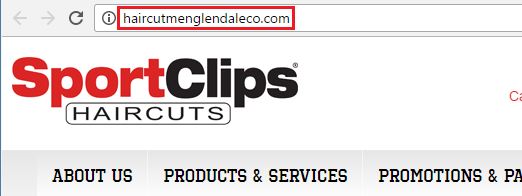Multi-location local SEO strategy: domain structure
How should brands with multiple brick-and-mortar locations structure their web properties? Columnist Andrew Beckman weighs in.

Photo credit: Clark Street Mercantile
Enterprise brands with a major brick-and-mortar presence have a unique challenge in digital marketing: connecting with consumers online, with the intent of ultimately encouraging them to visit a physical business location to make a purchase.
By creating a more user-focused experience that includes individual location landing pages for physical business locations, franchise systems and multi-location brands can turn user queries into business visits.
Developing location pages that are an extension of the primary brand domain allows brands to capture valuable real estate on search engine results pages (SERPs) and rank more prominently on hyper-local search terms above online directories like Yelp, Insider Pages and more.
Often, during the initial research phase of the customer journey, a consumer is looking for a product or service but is brand-agnostic. Leveraging this type of local SEO strategy can help drive in-store sales from these brand-agnostic consumers by tapping into coveted geo-specific, non-branded search terms and phrases.
However, many brand teams and franchisors have adopted a policy of allowing their franchisees and location owners to create their own landing pages and website domains instead of creating location pages on the primary brand domain. This type of independently executed approach can be found across a variety of industry verticals, and it can lead to the creation of domains like this:
As you can see, the domain is branded, but with a geo-modified URL.
Another version of this singular approach can involve using a non-branded, geo-modified domain, like this one for a men’s salon in Glendale, Colorado:
There has been a debate going on for quite some time as to whether brands should take an approach that manages local SEO from the top down or allows individual locations to manage SEO on their own — a “centralized strategy” vs. a “decentralized strategy.” Let’s take a look at both approaches and evaluate the pros and cons.
Decentralized strategy
Establishing a decentralized strategy essentially involves allowing your individual franchisees to run their own digital marketing programs by themselves, with no guidelines, management or oversight by the brand or corporate teams. This approach can include both paid and organic media strategies and is often summed up in a fashion that resembles a “wild west” scenario with each franchisee responsible for its own local digital marketing.
When it comes to SEO specifically, the use of many domains — such as xyzdenver.com and xyzdallas.com — creates the challenge of having to manage each domain separately, costing the brand the opportunity to build valuable ranking authority around one primary domain. Each property also ends up needing its own web analytics setup, content strategy and more. Multiply that by thousands of locations, and you’re looking at a scenario that requires a massive amount of resources to manage.
Furthermore, if these sites are managed by a third-party vendor who decides to delete those previously indexed URLs when your relationship ends, you could find yourself in serious trouble trying to gain back the SERP equity you’ve lost.
The “holy grail” of search engine marketing is to drive incremental visits from consumers who are not familiar with your brand and thus tend to find you when searching with geo-modified and/or non-branded terms, such as “hardware store near me.” Trying to compete for these desired phrases on thousands of different domains creates a vastly more complex world for your SEO practice. It necessitates vast amounts of content production to populate and maintain multiple sites.
Additionally, this strategy means that valuable links to your brand will be spread across many local domains instead of being concentrated on one central source. This creates an environment that ultimately doesn’t build a tremendous amount of ranking authority because the search engine signals are being spread too thinly across multiple domains.
Note: Some multi-location brands have employed a tactic that leverages subdomains for location pages, where the local property shares a root domain with the main brand website but is sitting on an entirely separate IP block. There is some debate over whether Google treats these subdomains as separate websites versus a single website, and it seems to depend somewhat on how the subdomains are set up. Use caution if employing this strategy.
Centralized strategy
Establishing a centralized strategy involves ensuring the franchisor or brand management team is in ultimate control over the decision-making on key aspects of both national and hyper-local strategies. These key aspects can include the brand position, messaging, important seasonal and direct marketing initiatives and more.
When a single primary domain continues to build authority over time, you afford yourself a much better opportunity for improved link acquisition, which is one of the main signals that helps drive up your rankings by allowing you to appear higher on non-branded geo-modified queries.
From a local search standpoint, it’s also important to create metro and location pages so that your brand appears in SERPs for non-branded and geo-modified phrases. Those pages (e.g., Google Maps, Apple Maps) can also be associated with your local business listings by using the appropriate location URLs. It’s important to ensure that those pages also have the appropriate content, metadata and structured data in place to appear on organic local search queries.
When using the centralized approach, an ideal location URL would look something like this: https://www.yourbrand.com/new-york-city-ny/325-manhattan-midtown-east.
Notice the location page is set up in a subdirectory of the root domain (not a subdomain) so that the root domain can assist this page with internal linking strategies to drive more ranking authority. If your brand is selling products in a physical store, creating pages under the primary location page to show things such as updated inventory by store location can help give the consumer more useful information as they decide where to make a purchase.
Furthermore, creating metro pages within the main brand domain also allows a brand or franchisor to go after larger geographical and regional phrases, such as “Brooklyn athletic club,” by populating several locations under one domain and structuring the content to focus on those larger regional phrases.
An example of this type of metro page structure looks something like this: https://www.yourbrand.com/metro/new-york-city-ny.
In doing so, your brand now has hyper-local, regional and state-level structure in place to compete on all geographical levels.
In conclusion
Local landing page subdirectories can be very beneficial for the overall health of your local SEO strategy, particularly if your brand has a multitude of brick-and-mortar locations. As Google continues to evaluate and leverage different ranking factors, centralizing your efforts with a focus on one primary domain will benefit lower-level location pages, giving the physical business locations a sound SEO foundation that is set up to allow for more prominent organic rankings.
As search engines continue to refine their ranking algorithms, the battle to drive greater traffic from the SERPs becomes more critical as time goes on. Having a solid, centralized foundation that focuses on developing individual location pages can give your brand the edge in helping capture the attention of brand-agnostic consumers in an attempt to turn them into your customers.
Contributing authors are invited to create content for Search Engine Land and are chosen for their expertise and contribution to the search community. Our contributors work under the oversight of the editorial staff and contributions are checked for quality and relevance to our readers. The opinions they express are their own.
Related stories
New on Search Engine Land

